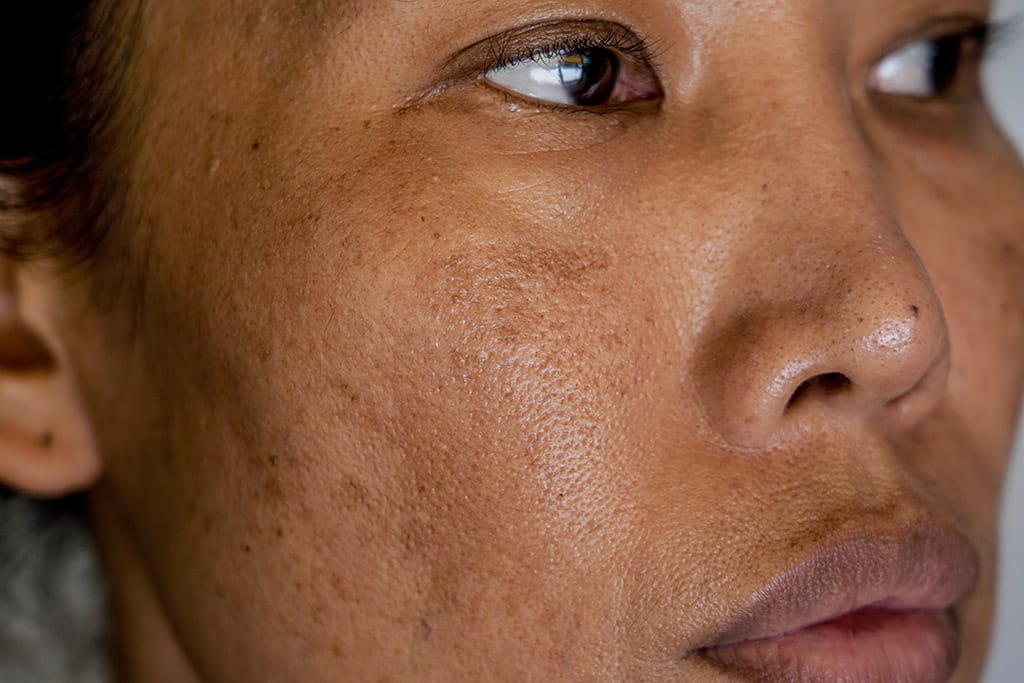What is Melasma?
Melasma is a common skin condition that causes brown to grayish-brown patches on the cheeks, nose, forehead, chin, and upper lip. 90% of patients with melasma are women, and the condition is more common in people with darker skin, such as those of Asian, Latin or Hispanic, Mediterranean, Indian, Middle Eastern, and North African descent.
Causes of Melasma
The cause of melasma is not entirely clear, although sun exposure and changes in hormones seem to be important in stimulating over-activation of the skin’s pigment producing cells. Melasma likely occurs when the color-making cells in the skin (melanocytes) produce too much color. People with skin of color are more prone to melasma because they have more active melanocytes than people with light skin.
Common Melasma Triggers Include
Diagnosing Melasma
Melasma is most often diagnosed clinically by your dermatologist looking at your skin. Melasma does not cause any pain or symptoms. Melasma is exclusively an aesthetic condition.
Treating Melasma
Treatment can be challenging depending on where the pigment is located in your skin. Pigment closer to the skin’s surface is more easily treated, while deep pigment can be very persistent. Treatment often includes a combination of therapies including:
Schedule a Consultation
We understand that melasma is a frustrating, chronic condition and look forward to working with you to devise a successful treatment regimen. Schedule a consultation with one of our fellowship-trained, board-certified dermatologists today. With offices in Beverly Hills, Encino, and Torrance, CA we hopefully have a dermatology office located near you.






